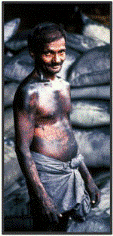Human Trafficking, Interdisciplinary Conference on

Annual Interdisciplinary Conference on Human Trafficking: 6th (2014)
Date of this Version
9-2014
Document Type
Presentation
Citation
6th Annual Interdisciplinary Conference on Human Trafficking 2014. October 9-11, 2014, Lincoln, NE
Abstract
Human trafficking is globally recognized as a modern day slavery with multifarious negative socio-economic, legal and health implications. Besides drugs trafficking and gun running, human trafficking has become a lucrative business globally and yields an estimated US$32 million annually. Traffickers trade on human lives, subject them to gory and traumatic experiences in order to make profits. Human trafficking is therefore the worst form of human rights violations and a gender based violence against female who constitute the majority of the victims in the country. Regrettably, Nigeria occupies the ignoble position of a source, transit and destination country for trafficking. In the recent time, the scourge has assumed complex dimensions, become more elusive, shrouded in secrecy and with the attendant consequences and implications on the live of the country. Data from the National Agency for the Prohibition of Traffic in Persons and other related matters, (NAPTIP) show that seventy eight percent of victims of human trafficking in Nigeria fall within the age range, 8 - 27 years. Children within this age bracket are naturally of school going age. Victims of trafficking miss educational opportunities needed for today’s globalized world. This paper discussed the dynamics of human trafficking in Nigeria, some emerging trends in trafficking, the socio-economic implications, government’s strategies in curbing the menace and possible adoption as good practice.
Download button links to pdf file version; PowerPoint slides are attached below.
PowerPoint slides
Included in
Criminology Commons, Domestic and Intimate Partner Violence Commons, Gender and Sexuality Commons, Health Policy Commons, Human Geography Commons, Human Rights Law Commons, Immigration Law Commons, Inequality and Stratification Commons, Law and Gender Commons, Place and Environment Commons, Social Control, Law, Crime, and Deviance Commons, Social Welfare Commons, Social Work Commons


Comments
Copyright (c) 2014 Dr Eunice Anuforom.